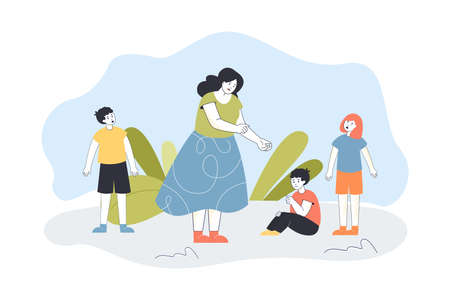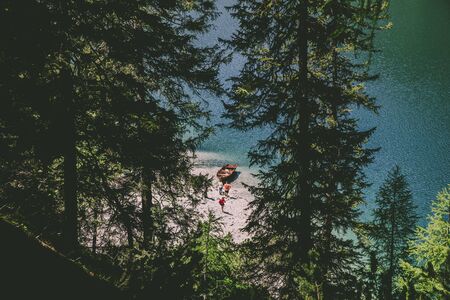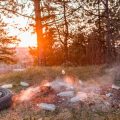Understanding Your Camping Destination
Before heading out on your first family camping trip, its important to really get to know the place youre going. Understanding your destination helps you plan better and keeps your family safe. From terrain and weather to wildlife and facilities, doing a little research goes a long way.
Know the Terrain
Different campgrounds offer different landscapes. Some might be flat and grassy, while others are rocky or hilly. Knowing what kind of ground you’ll be dealing with helps you choose the right gear—like sturdy shoes or extra tent stakes—and prepares your kids for what to expect.
Check the Weather Forecast
Weather can change quickly, especially in the mountains or near water. Look up both the average seasonal weather and short-term forecasts before you go. Bring layers for changing temperatures, rain gear just in case, and always pack extra blankets or sleeping bags for warmth at night.
Understand Local Wildlife
Each area has its own animals. Some may be harmless, while others—like bears or snakes—require special precautions. Check with the campground or local park service to learn what animals live there and how to store food safely.
Common Wildlife & Safety Tips
| Animal | Common Locations | Safety Tip |
|---|---|---|
| Bears | Mountain regions, forests | Use bear-proof containers; never leave food out |
| Snakes | Deserts, wooded areas | Wear boots; watch where you step |
| Raccoons | Most campgrounds | Keep trash sealed; don’t leave food unattended |
Review Campground Facilities
Not all campgrounds have the same amenities. Some offer restrooms, running water, or even electricity, while others are more primitive. Check ahead so you know whether to bring extra water jugs, portable toilets, or backup chargers for devices.
Facility Checklist Example:
- Restrooms available?
- Running water on-site?
- Fire pits or grills provided?
- Paved trails or rough paths?
- Cell phone reception?
A little planning now helps prevent surprises later. When you understand the environment you’re stepping into, it’s easier to keep everyone safe and make sure your first camping trip is full of fun—not stress.
2. Essential Safety Gear and First Aid Prep
Before heading out on your first family camping trip, its important to be prepared with the right safety gear. A well-thought-out packing list can help you stay organized and ready for any situation. Here are some of the most critical items to include in your camping safety kit:
Must-Have Safety Items
Whether youre camping at a national park or a local campground, these essentials should always be part of your gear:
| Item | Why Its Important |
|---|---|
| First Aid Kit (fully stocked) | For treating cuts, scrapes, bug bites, and other minor injuries. |
| Flashlights & Headlamps | Essential for visibility at night; one per person is ideal. |
| Extra Batteries | Keep all battery-powered devices running throughout the trip. |
| Paper Maps & Compass | If GPS fails or theres no signal, paper maps are a reliable backup. |
| Weather-Appropriate Clothing | Dress in layers and pack rain gear to keep everyone comfortable and dry. |
Packing Tips for Families
- Create a checklist before you start packing and check off items as you go.
- Pack each childs clothing and personal items in separate, labeled bags to stay organized.
- Place frequently used items like flashlights and the first aid kit in an easy-to-reach spot inside your tent or car.
- Make sure kids know where safety items are stored and how to use them if needed.
Helpful Hint
A plastic storage bin makes a great container for your family’s camping safety supplies—its waterproof, easy to carry, and keeps everything in one place.
Stay Ready, Stay Safe
Being well-prepared with essential gear can make all the difference during your camping adventure. Having everything you need at your fingertips not only gives you peace of mind but also teaches kids about responsibility and safety in the great outdoors.

3. Teaching Kids Basic Outdoor Safety
Before heading out on your first family camping adventure, its important to teach kids how to stay safe in the great outdoors. Children may get excited and wander off or touch things they shouldnt, so preparing them with basic outdoor safety knowledge can make a big difference.
What to Do If They Get Lost
Make sure your children know exactly what to do if they become separated from the group. Use the “Stay Put” rule — tell them to stop walking and stay where they are. Teach them to make noise by shouting or using a whistle, which you can clip onto their backpack or jacket. Its also helpful for each child to carry a small laminated card with their name, your contact information, and campsite location.
Lost Kid Safety Checklist
| Tip | Description |
|---|---|
| Stay in one place | This makes it easier for adults or rescuers to find them. |
| Use a whistle | Three short blasts is a universal signal for help. |
| Wear bright clothing | Makes it easier to spot them in the woods. |
| Memorize emergency info | Name, parents phone number, and campsite number should be known or carried. |
How to Identify Poisonous Plants
Kids are naturally curious, but not all plants are safe to touch. Teach them the old saying: “Leaves of three, let it be,” which helps identify poison ivy, poison oak, and poison sumac. Show them pictures ahead of time and point out these plants once youre at the campsite.
Common Poisonous Plants to Avoid
| Plant Name | Identifying Features |
|---|---|
| Poison Ivy | Three pointed leaves; may have a reddish tint in spring or shiny surface |
| Poison Oak | Grouped leaves of three; resembles oak tree leaves |
| Poison Sumac | Pinnate leaves with 7–13 leaflets; grows as a shrub or small tree in wet areas |
Respecting Wildlife
Seeing animals in the wild can be exciting, but kids need to understand that wild animals arent pets. Teach them never to approach or feed wildlife. Explain that loud noises or sudden movements can scare animals and create danger. Also, remind kids not to leave food out — it attracts unwanted animal visitors to your campsite.
Wildlife Safety Tips for Kids:
- Keep your distance: Watch animals from afar using binoculars if needed.
- No feeding: Human food can harm animals and encourage aggressive behavior.
- Store food properly: Use bear-proof containers or hang food bags away from tents.
- Avoid nests or dens: These areas can make animals feel threatened and more likely to defend themselves.
By teaching your kids these basic outdoor safety rules before your trip, youll help build their confidence while keeping everyone safe during your first family camping experience.
4. Establishing Campground Rules and Emergency Plans
When you’re heading out on your first family camping adventure, it’s important to set clear rules and have a simple emergency plan in place. Doing this helps everyone stay safe, know what to expect, and feel more confident in the great outdoors.
Setting Family Rules for Campground Behavior
Before you even pack up the car, sit down as a family and talk about how everyone should behave at the campsite. This helps kids understand boundaries and keeps things running smoothly for everyone. Here are some basic rules you can consider:
| Rule | Why It Matters |
|---|---|
| Stay within sight of an adult | Keeps children safe and prevents them from getting lost |
| No running near tents or fire pits | Reduces risk of tripping or injury near dangerous areas |
| Respect quiet hours (usually after 10 PM) | Keeps peace with other campers and follows campground policies |
| Keep food stored properly | Avoids attracting wildlife to your site |
Create a Simple Emergency Plan
An emergency plan doesn’t have to be complicated—just make sure everyone knows what to do if something unexpected happens. Here’s how to get started:
1. Choose a Meeting Spot
Select a safe, easy-to-find location where your family will meet if someone gets separated. This could be the campground’s entrance sign, ranger station, or even your own tent if it’s visible enough.
2. Teach Kids How to Identify Helpers
If someone gets lost, they should know who to approach for help. Park rangers, campground hosts, or families with children are usually good options.
3. Know Local Emergency Contacts
You may not have cell service in remote areas, so write down local emergency numbers ahead of time. Keep a printed list in your backpack or glove box.
| Service | Contact Info |
|---|---|
| Nearest Ranger Station | [Insert number here] |
| Local Emergency (Fire/Medical) | 911 (works across U.S.) |
| Towing/Roadside Assistance | [Insert number here] |
4. Practice the Plan Together
A quick walk-through when you arrive at camp can help your kids remember what to do if they ever feel unsure or unsafe. Go over where to meet, who to ask for help, and how to use a whistle or call out if needed.
This kind of preparation might seem simple, but it can make a huge difference when youre out in nature for the first time as a family.
5. Fire Safety and Cooking Precautions
Campfires are a fun and cozy part of the camping experience, but they also come with serious risks if not handled properly. Teaching your family how to safely build, manage, and put out a fire is key to keeping everyone safe—and preventing wildfires.
How to Safely Build a Campfire
Before you strike that first match, make sure youre in a designated fire ring or pit. Clear away any dry leaves, twigs, or flammable items within a 10-foot radius. Use only local firewood to avoid spreading pests and diseases from one area to another. Heres a quick guide:
| Step | What to Do |
|---|---|
| 1. Location Check | Use designated fire pits; clear the area around it. |
| 2. Firewood Prep | Use dry wood only; no trash, plastics, or treated wood. |
| 3. Starting the Fire | Use matches or a lighter with tinder like dry leaves or newspaper. |
Maintaining the Fire Safely
Never leave your campfire unattended—even for a minute. Keep a bucket of water and a shovel nearby just in case things get out of hand. Teach kids to stay at least three feet away from the flames and never run near the fire pit.
Fire Watch Tips for Families
- Assign an adult as the “fire watcher” during meals or evening gatherings.
- Teach children to alert an adult immediately if something falls into the fire.
- Avoid using flammable liquids like lighter fluid or gas to start or revive fires.
Extinguishing the Fire Properly
When youre done enjoying your campfire, douse it completely with water—don’t just let it burn out. Stir the ashes with a stick or shovel until everything is cold to the touch. This ensures no hidden embers can reignite later on.
Safe Cooking Practices at Camp
Meal prep is part of the fun, but cooking outdoors requires extra care. Whether youre using a portable stove or cooking over open flames, safety comes first:
| Cooking Method | Safety Tip |
|---|---|
| Camp Stove | Set it on a flat surface away from tents; never use inside enclosed spaces. |
| Grill/Fire Pit | Use long-handled tools and heat-resistant gloves to avoid burns. |
| Coolers & Food Storage | Keep perishable foods below 40°F; separate raw meats from ready-to-eat items. |
Avoiding Foodborne Illnesses
- Always wash hands before handling food—use biodegradable soap and clean water.
- Cook meats to proper internal temperatures (use a food thermometer if possible).
- Refrigerate leftovers promptly in coolers with plenty of ice packs.
By following these basic fire and cooking safety tips, your family will be better prepared for a fun and incident-free camping adventure.


